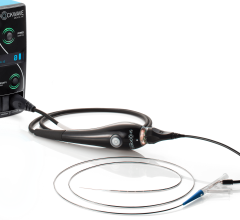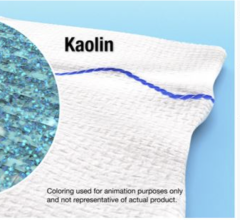
June 20, 2017 — BioTrace Medical Inc. announced that the company’s Tempo Temporary Pacing Lead was featured in an oral presentation and two live cases during the Transcatheter Valve Therapies (TVT) 2017 conference, June 14-17 in Chicago. Tamim Nazif, M.D., director of clinical services of the Structural Heart and Valve Center at NewYork-Presbyterian/Columbia University Medical Center, presented real-world experiences with the Tempo Lead from transcatheter aortic valve replacement (TAVR) cases.
Nazif’s presentation highlighted the safety of the Tempo Lead, with real-world U.S. experience to date demonstrating no dislodgements or perforations, as well as the technology’s reliable pace capture during and after the procedure, facilitating earlier patient ambulation in recovery.
"Our real-world experience with the Tempo Lead is consistent with the excellent results of the New Zealand first-in-human study demonstrating the safety and reliable performance of the device,” said Nazif. "The Tempo Lead may improve the safety of TAVR and other structural heart procedures by reducing complications like cardiac perforation, loss of pacing capture and valve embolization. There may also be opportunities with the Tempo Lead to reduce the length of ICU stay, expedite recovery and reduce permanent pacemaker implantation with a strategy of watchful waiting in patients with transient conduction disturbances.”
Temporary pacing is an important and necessary adjunctive therapy to support patients undergoing TAVR procedures, but can be associated with serious complications including cardiac perforation and dislodgement with loss of pace capture. BioTrace Medical’s Tempo Lead, cleared in October 2016 by the U.S. Food and Drug Administration (FDA), features a unique design that mitigates the risk of these complications and is the only active fixation temporary lead available, according to the company.
Nazif presented an overview of the technology, highlighting three case studies from NewYork-Presbyterian/Columbia University Medical Center’s use of the lead, as well as early U.S. Tempo Lead experience in several hundred cases with no device-related adverse events, no perforations and no dislodgements. In addition, real-world experience shows patients ambulating post-procedure with the Tempo Lead in place, and overall highly favorable operator feedback.
Additionally, Nazif and Susheel Kodali, M.D., co-director of the Structural Heart and Valve Center at NewYork-Presbyterian/Columbia University Medical Center, performed two live TAVR cases using the Tempo Lead, which were broadcast to attendees at TVT 2017.
“The Tempo Lead has become an important part of our TAVR practice, and I believe that due to its stability and safety the use of this innovative technology will become an important adjunct for TAVR procedures,” said Kodali. “Our own experience to date has been consistent with clinical data from the first-in-human study of the device. This technology provides peace of mind, offering stable pacing both during and after the procedure.”
Results from a 2016 multi-center study of 25 patients conducted in New Zealand demonstrated the safety of the Tempo Lead, with no device related adverse events, dislodgements, sustained ventricular arrhythmia or cardiac perforations. Pacing with the Tempo Lead was successful in all treated patients with no loss of pace capture or lead dislodgement. Average procedural pace capture threshold was 0.7±0.5mA. Rapid pacing was successful in all cases with no loss of capture.
Read the article "First U.S. TAVR Patients Treated With Temporary Pacing Lead."
For more information: www.biotracemedical.com


 May 01, 2025
May 01, 2025 









